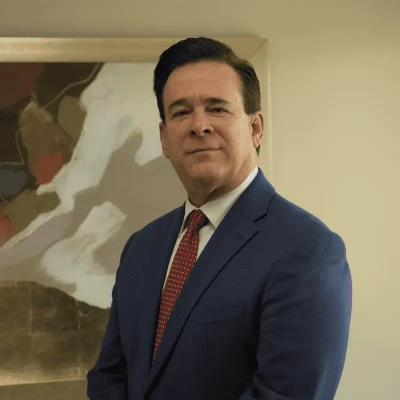9 Times When Operational Efficiency Backfired: Lessons on the Limits of Optimization
Operational efficiency measures can sometimes produce unexpected negative outcomes, as demonstrated by nine revealing case studies from industry specialists. These examples show how prioritizing speed, standardization, and rigid processes can undermine quality, creativity, and customer relationships. Expert analysis reveals the crucial balance organizations must strike between optimization and maintaining the human elements that drive sustainable business success.
Sacrificing Quality Control for Processing Speed
There was a time early in my career when we tried to streamline our refining process to the point where every step was measured by speed and cost savings. On paper, it looked like a success. We reduced processing time and trimmed overhead, which should have meant stronger margins. What actually happened was more complicated. We discovered that in our push for efficiency, we had created a bottleneck in quality control. The refiners were working faster, but the attention to detail that our clients expect began to slip. It didn't take long before a few clients flagged issues that, while minor, went directly to trust.
That experience taught me that efficiency has a ceiling. Beyond a certain point, the savings you gain are outweighed by the erosion of what really matters: confidence in your product. In the gold industry, confidence is everything. People buy more than a commodity; they buy certainty. Since then, I've approached optimization with a balance in mind. Efficiency should serve excellence, not undermine it. It reminded me that growth comes not from shaving seconds but from reinforcing the fundamentals that make people want to do business with you in the first place.
Production Speed Stifled Creativity and Innovation
There was a moment when we tightened production schedules to meet high demand. While this approach increased efficiency, it left little room for creativity and reflection among our team. We noticed that constant speed made it harder for people to think deeply and explore new ideas. Innovation does not thrive under pressure and pushing too hard can limit the quality of our work. By observing this, we began to understand that efficiency should serve as a tool to support people not as a measure that exhausts them.
We soon realized that slowing down allowed space for inspiration and thoughtful improvement. When the team had time to reflect, ideas flowed more freely and solutions became more creative. The balance between productivity and peace of mind proved essential. This approach showed us that the best work happens when efficiency and calm coexist, allowing people to perform at their highest level.

Formal Ticketing System Eliminated Vital Conversations
We once streamlined our internal communication so aggressively that it actually slowed us down. We replaced casual check-ins with a ticketing system to "save time" and track every request. It worked fine on paper, but it stripped away the quick conversations that helped our office and field teams stay connected. Problems that used to take two minutes to solve in person turned into long message threads that killed momentum and morale.
It taught me that efficiency has to leave room for humanity. Not every process needs to be automated or documented—some need a five-minute chat and a little trust. Now we treat systems as tools, not walls, and build time back in for real communication. Sometimes the fastest way to get things done is to stop trying to optimize everything.

Rushed Service Schedules Damaged Customer Relationships
I tried tightening our technicians' schedules to squeeze in more service calls per day. On paper, it made perfect sense—fewer gaps between appointments meant more revenue and better efficiency. But within a few weeks, I started noticing morale drop. Technicians were rushing through jobs, customer satisfaction scores slipped, and small mistakes started popping up. One of my best techs pulled me aside and said, "Matt, we don't even have time to talk to customers anymore." That hit me. I had pushed so hard for operational efficiency that I'd stripped away the personal connection that made our service stand out in the first place.
I learned that optimization has to serve people, not the other way around. The fix wasn't complicated—we eased the schedules slightly, added buffer time, and encouraged techs to take those few extra minutes with customers again. Within a month, our reviews improved and the team's energy came back. The lesson was clear: systems and efficiency are tools, not goals. When you prioritize output over relationships, you might gain a few extra jobs on paper but lose the trust and quality that built the business in the first place.

Monthly Maintenance Plan Created Costly Delays
When I tried to consolidate maintenance requests and repairs for all my rental properties into one monthly "big fix day," thinking I'd save on both time and contractor fees, it actually led to longer wait times for tenants and small problems snowballing into bigger, costlier ones. The lesson for me was that chasing max efficiency can quickly turn minor headaches into major issues--responsive service and attention to real needs will always come before squeezing every drop out of a process.

Zero Buffer Time Led to Burnout
We once tightened our scheduling system so aggressively that crews moved from one project to the next without buffer time. On paper, productivity soared, but in reality, burnout rose and quality control slipped. Small issues that would have been caught during downtime turned into costly callbacks. The experience taught us that efficiency has a ceiling—beyond it, you trade reliability for speed. True optimization isn't about removing every gap; it's about preserving enough margin for people to think, rest, and do their best work.

Strict Criteria Missed Valuable Real Estate
I once optimized our purchase offer process by creating strict criteria that automatically rejected properties with certain features to save time evaluating deals. This backfired when we passed on a property with water damage that would have been an incredible opportunity despite its flaws. The owner was willing to significantly discount the price, but our efficiency-focused system never allowed us to discover this. I learned that while systems and processes are valuable, real estate is ultimately about relationships and unique opportunities that don't always fit neatly into optimization frameworks. Sometimes the 'inefficient' conversations reveal the best opportunities.
Automated Intake Process Reduced Client Trust
A few years ago, I tried to streamline our law firm's intake process by automating nearly every step. The goal was to increase operational efficiency and reduce the time our team spent on repetitive tasks. We introduced a new online form system and automated follow up emails so prospective clients could move through the process quickly without waiting for a callback. On paper, it worked beautifully. Response times improved and data was organized faster.
But within a few weeks, I noticed a drop in our conversion rate. Fewer prospects were signing on, even though they were engaging with the system. When we followed up manually, some said they felt the process was cold or confusing. They wanted a human voice to guide them, especially during a stressful legal moment.
That experience taught me an important lesson. Efficiency has limits when it replaces connection. In a people driven business like law, clients need to feel heard, not just processed. We adjusted by keeping some automation in place but making sure every lead received a personal call early on.
Optimization should support relationships, not replace them. The right balance is what drives both growth and trust in the long run.
Standardization Replaced Adaptability and Curiosity
A few years ago, we over-optimized our workflows at Tinkogroup to maximize efficiency. We standardized every process and automated wherever possible. For a while, it worked beautifully — costs dropped, turnaround times improved. But over time, I noticed something troubling: our team had stopped questioning how things were done. Efficiency had replaced curiosity. When a complex or ambiguous client request came in, people hesitated to deviate from the "optimized" path.
That experience taught me that efficiency should never come at the expense of adaptability. Optimization works best when it supports people's judgment, not when it replaces it. Now, I treat efficiency as a moving target — something to revisit regularly, not a finish line. We still optimize, but we keep space for experimentation and human input, because that's where innovation and resilience actually live.





